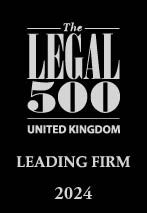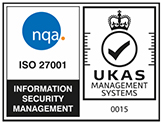We’re here when you need us
Cerebral Palsy
There are many different types of injury that can cause cerebral palsy, including a difficult labour resulting in a lack of oxygen to the brain, head trauma, meningitis, stroke and infection.
Not all are caused by medical negligence, but occasionally some are. Such medical mistakes may stem from the following:
- Failure to appropriately monitor the baby and perform a timely caesarean section, causing long-term oxygen deprivation to the baby’s brain
- Improper use of forceps or suction during birth
- Failure to discover a prolapsed umbilical cord and act accordingly
- Failure to diagnose and treat jaundice
- Failure to diagnose and treat infection
- Failure to diagnose and treat meningitis
The most apparent symptoms of cerebral palsy are impaired movement and motor function. Children diagnosed with cerebral palsy may also have other medical conditions, such as seizure disorders, developmental delays and feeding problems.
If a baby has suffered some form of cerebral palsy they are likely to show both physical and cognitive (mental) developmental problems. These developmental problems may vary in severity. They may also only affect one area of a child’s development or they may affect several. The degree of severity will often directly relate to the extent of the original birth injury.
The following sets out some broad areas of development that may be affected:
- Gross motor skills : ability to use large groups of muscles for sitting, standing, running, walking, and maintaining balance
- Fine motor skills : using hands to eat, dress, play, write, and handle small objects
- Language skills : ability to speak, use gestures, communicate and understand language
- Cognitive ability : ability to learn, understand, problem-solve, remember and reason
- Social skills : ability to interact with others, feel empathy and sympathy and have relationships
Types of Cerebral Palsy
If a baby has shown signs of developmental problems and a diagnosis of cerebral palsy is later made, it is likely that the cerebral palsy will be categorised. The categorisation of cerebral palsy can be quite complicated but will generally fall into one of the following:
Spastic cerebral palsy
Spastic means that the affected muscles are more stiff than normal and cause the child to make jerky movements. How stiff and jerky an affected arm or leg is can vary significantly from case to case. In particular, some muscles may become permanently shortened (contracted) and stiff, causing the child long term complications.
Athetoid or dyskinetic cerebral palsy
Some children with this type of cerebral palsy have slow, writhing movements of the hands, arms, legs or feet. They may also have sudden muscle spasms. These movements cannot be controlled and so are involuntary. On occasions the tongue and/or facial muscles will be affected. The stiffness (tone) of the muscles can vary from too high to too low. As a result, children with athetoid cerebral palsy have difficulty in staying in one position. They may also be unable to use their arms or hands properly.
Ataxic cerebral palsy
A child with ataxic cerebral palsy will have difficulties with balance and fine movement. This can mean loss of balance or being unsteady when walking. It can also make doing tasks that require fine motor skills, such as writing, very difficult. A child with this form of cerebral palsy will usually have decreased muscle tone.
Mixed cerebral palsy
Mixed cerebral palsy is a combination of two or three of the above types. It is most often a combination of spastic and athetoid cerebral palsy, which results in stiff muscle tone and involuntary movements.
Further Classification
Further classification of cerebral palsy helps to provide a description of how and where a child is affected by it. There are two terms at the heart of the classification; paresis which means weakened and plegia/plegic, which means paralysed. When you link these with the area of the body affected the following further classifications of cerebral palsy are produced:
- Monoplegia/monoparesis - this means only one limb is affected.
- Diplegia/diparesis - this primarily affects the lower body and thus the legs are affected more than the arms.
- Hemiplegia/hemiparesis - this indicates that the arm and leg on one side of the body has been affected.
- Paraplegia/paraparesis - this means the lower half of the body, including both legs, are affected. The arms are unaffected.
- Triplegia/triparesis - this indicates that three limbs are affected. This could be both arms and a leg, or both legs and an arm. It could also refer to one upper and one lower extremity and the face.
- Double hemiplegia/double hemiparesis - this indicates that all four limbs are involved, but one side of the body is more affected than the other.
- Tetraplegia/tetraparesis - this indicates that all four limbs are involved, but three limbs are more affected than the fourth.
- Quadriplegia/quadriparesis - this means that all four limbs are involved.
- Pentaplegia/pentaparesis - this means all four limbs are involved as well as paralysis of the neck and head, which is often accompanied by eating and breathing problems.






